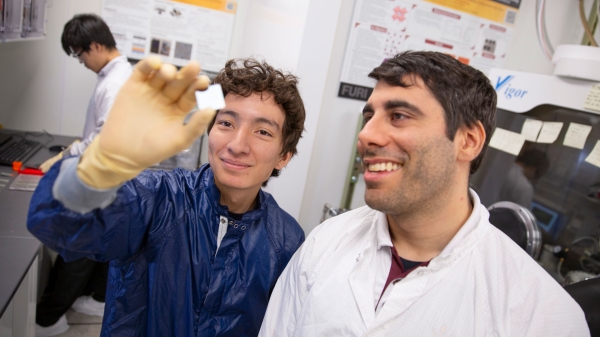Folding towels. Peeling fruit. Scratching microphones. Hearing sweet nothings whispered in your ear.
Those are the underpinnings of Autonomous Sensory Meridian Response, currently the biggest trend you've never heard of.
Coined in 2010, ASMR is a relaxing, often sedative sensation that begins on the scalp and moves down the body. It has been called "brain massage.” Hundreds of videos on YouTube are meant to stimulate the feeling — bars of soap being sliced into shreds, a woman playing with her hair, someone slowly and precisely unboxing an iPhone.
If you’re older than most “tingleheads,” PBS painting instructor Bob Ross — he of happy-clouds and pretty-little-trees fame — is ASMR from head to toe.
It’s going mainstream. Celebrities have recorded ASMR videos. Kentucky Fried Chicken has an ASMR-themed ad. (Asked about it, KFC executive Kevin Hochman told The Washington Post, "There's a lot of comfort that's associated with ASMR, and that's what our food delivers.")
Adherents say it helps them sleep and deal with stress. Some report feeling better after watching ASMR videos.
Researchers haven’t delved into how or why ASMR works (and the National Science Foundation is not exactly throwing money at it), but psychologists do have some ideas.
For a primer on what these videos are and why they may work, ASU Now talked to Ryan Stoll, a psychology researcher at Arizona State University, and interviewed a number of volunteers to gauge their reactions.
Video by Deanna Dent/ASU Now
More Science and technology

Will this antibiotic work? ASU scientists develop rapid bacterial tests
Bacteria multiply at an astonishing rate, sometimes doubling in number in under four minutes. Imagine a doctor faced with a patient showing severe signs of infection. As they sift through test…

ASU researcher part of team discovering ways to fight drug-resistant bacteria
A new study published in the Science Advances journal featuring Arizona State University researchers has found vulnerabilities in certain strains of bacteria that are antibiotic resistant, just…

ASU student researchers get early, hands-on experience in engineering research
Using computer science to aid endangered species reintroduction, enhance software engineering education and improve semiconductor material performance are just some of the ways Arizona State…
